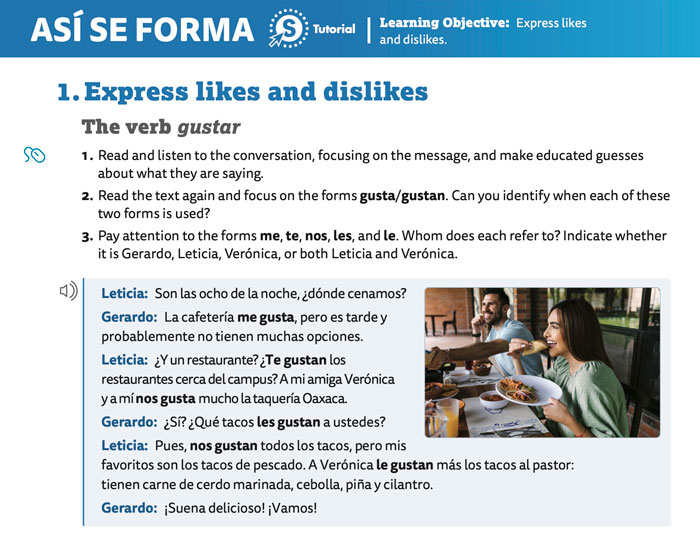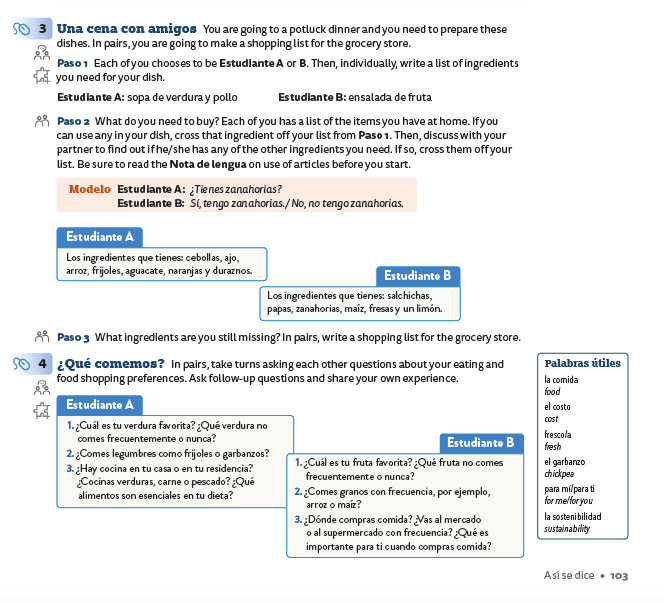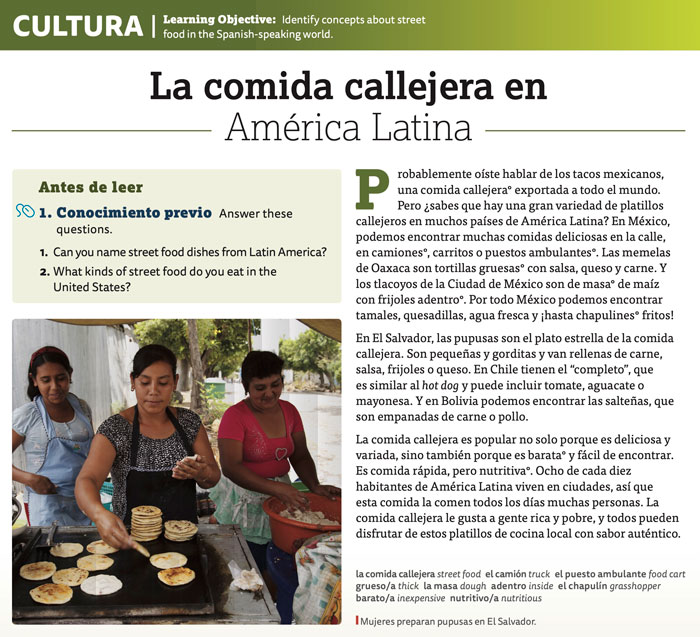

Fully integrated into the Supersite with NEW vText, digital workbook, reading, and videos allowing students for easy access to content, with extra practice as needed.


Fully integrated into the Supersite with NEW vText, digital workbook, reading, and videos allowing students for easy access to content, with extra practice as needed.

Vocabulary is presented in contextualized formats, including illustrations, speech bubbles, and comprehensible text. Students check their understanding of new vocabulary with simple questions in the ¿Qué observas? and ¿Y tú? sections. The activity sequence that follows each vocabulary presentation includes input-based exercises, situational conversations, and personal expression activities that help students practice new vocabulary in meaningful contexts.
New grammar topics are presented clearly and concisely in short texts, giving learners an opportunity to observe the forms and experience the meaning of the new language alongside formal explanations. Guiding questions help students think inductively and critically about language in context. A carefully sequenced set of activities follows each presentation, helping students practice the new structures in diverse formats and relatable contexts.


Vocabulary and grammar presentations are supported by a set of communicative activities that begin with input-based exercises and end with open-ended, output-based exercises. In pairs or large groups, students are asked to collaborate to solve communication gaps, make plans, express preferences, or make recommendations. These activities encourage students to think critically and invite creative use of the language for personal expression and authentic communication.
Thematic and regional readings are included in each chapter. Thematic readings focus primarily on cultural products, practices, and perspectives. Pre-reading and post-reading activities support comprehension and elicit cross-cultural comparisons. The new and revised regional readings feature countries or regions and are accompanied by activities designed to spark students’ curiosity and encourage them to do their own research, based on their own interests.
